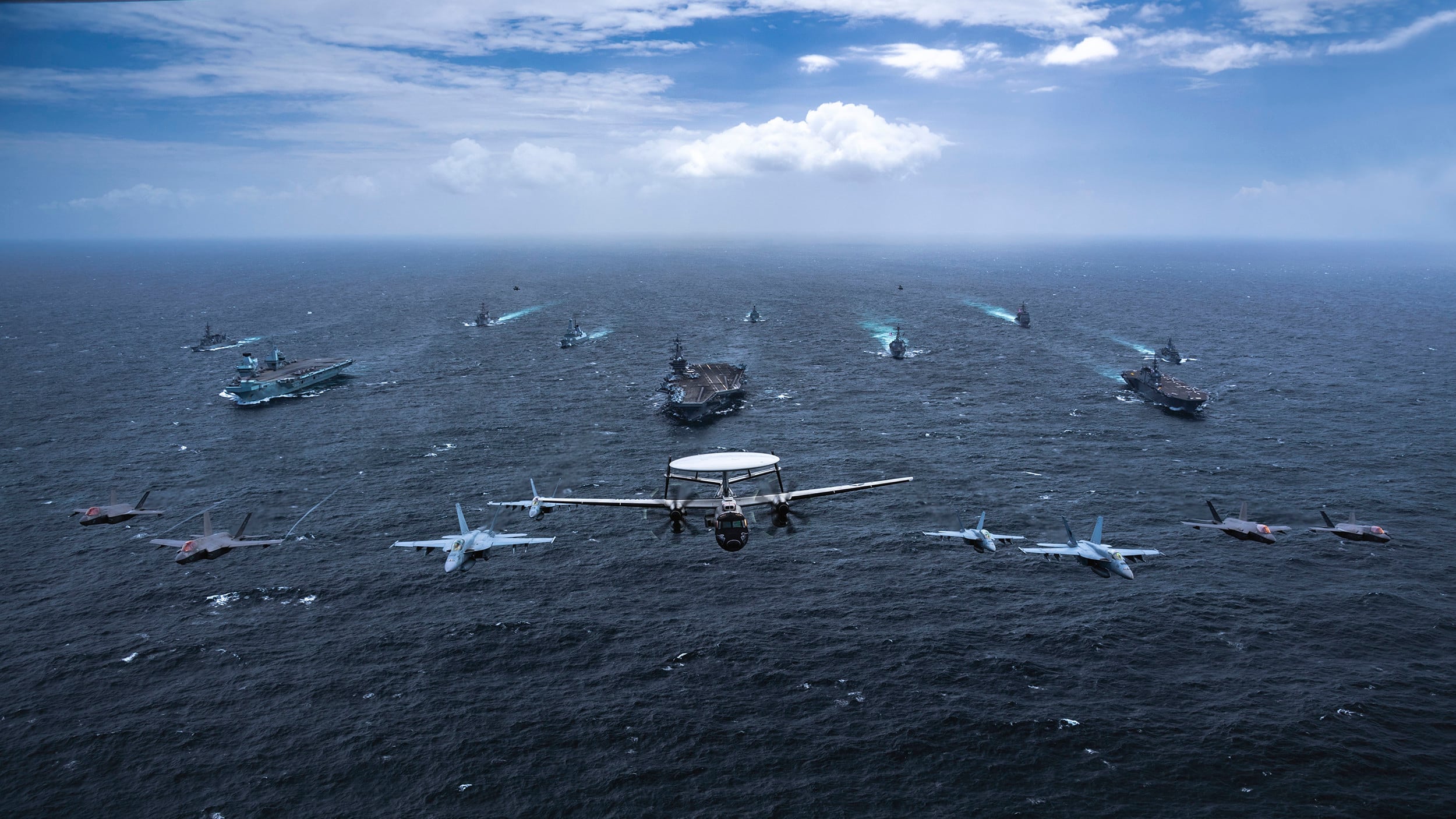In 2020, Mac Thornberry wanted to answer two questions: How much is the U.S. spending to prevent a war with China, and is it enough?
These were difficult, even for the top Republican on the House Armed Services Committee. And he wasn’t the only one asking. Thornberry often traveled to Asia, where U.S. allies had the same questions. Thornberry didn’t know what to tell them.
“What do we have to offer?” he said.
For two years, Congress had asked the Pentagon for a report on how much extra money it needed for the Pacific region, but never received one. So Congress demanded one.
“The attitude was, tell us what you need and we’ll try to help,” Thornberry said during a recent interview. “Well, if they’re not going to tell us, then we’re going to tell them.”
The defense policy bill for fiscal 2021 — named for Thornberry, who was retiring — created the Pacific Deterrence Initiative, a new section of the defense budget. PDI had two goals: to push the Pentagon to spend more on the region and to make that money easier to track.
Four years later, PDI has done only one of those two things, according to experts. It has certainly made China-focused defense spending more transparent, but it hasn’t driven much new spending on the Pacific. In fact, the part of America’s defense budget created to help deter a war with China has no actual money.
“Your priorities are always better reflected in your budget rather than in your rhetoric,” Thornberry said.
Whether those two areas match up may be the most important question in American defense policy right now. The last three administrations have decided China is America’s top threat, and a rising one at that. But it’s less clear how much money it will cost to address it and who gets to decide — Congress, the Pentagon or military leaders in the Pacific?
“I don’t think that we are somehow dangerously short of funding for the Indo-Pacific, whether it’s PDI or not,” Rep. Ed Case, D-Hawaii, who sits on the House Appropriations Committee’s defense panel, told Defense News in February.
“We’re going in the right direction, but the question is: Are we going there fast enough?”
A second opinion
This was the question that led to PDI.
In 2021, the head of Indo-Pacific Command, Adm. Phil Davidson, was in Washington ahead of his planned retirement to testify before Congress. Davidson hadn’t appeared before the Senate Armed Services Committee in two years due to the coronavirus pandemic.
Early on, Sen. Roger Wicker, R-Miss., presented a set of charts during a short call and response. Wicker read a list projecting the number of Chinese and American weapons in the region by 2025, asking Davidson to check his numbers.
Three Chinese aircraft carriers to America’s one. Six Chinese amphibious assault ships to America’s two. Fifty-four Chinese combat ships to America’s six.
The admiral confirmed each one.
“Our conventional deterrent is actually eroding in the region,” Davidson said.
What concerned him most was not that Beijing had a more powerful military overall; it was a problem of speed and distance. Taiwan — which the Chinese government considers a rogue province and has threatened to take back by force — is about 100 miles from the mainland. It’s more than 5,000 miles from Hawaii, the headquarters of U.S. Indo-Pacific Command.
It would take three weeks for the U.S. to rush ships to the area from the West Coast, and around 17 days to do so from Alaska, Davidson estimated. If China launched a rapid invasion, it might overwhelm Taiwan before the U.S. had a chance to arrive.
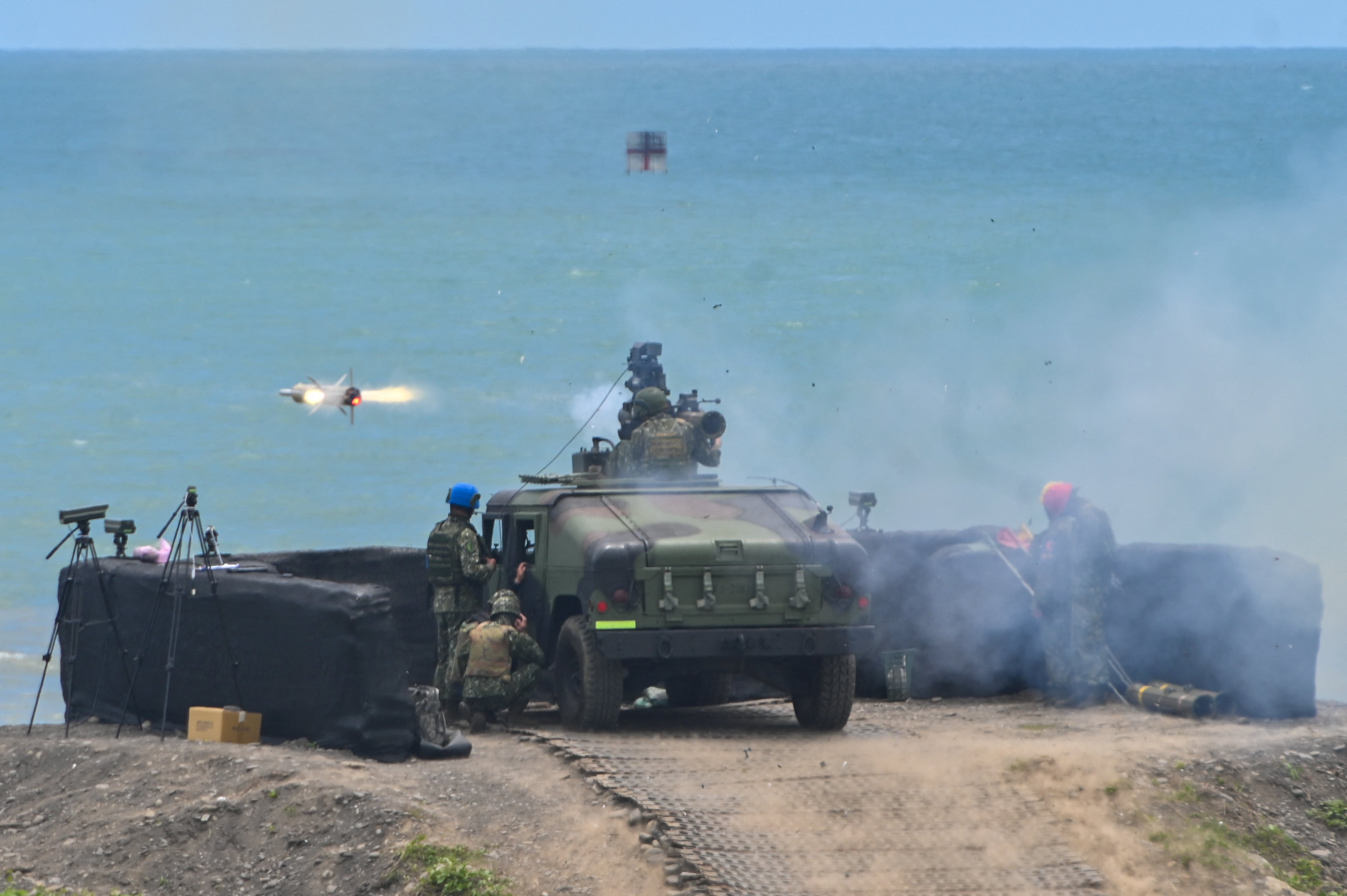
“The important factor here is time,” he said.
Davidson’s answer, and that of many committee members, was to push America’s forces closer to Taiwan — the military version of a full-court press. But the U.S. didn’t yet have the necessary infrastructure in place. It would need to construct bases, airfields, radars and other buildings along the Pacific islands that arc around Taiwan.
And this would cost money — lots of money.
PDI was, at first, meant to be the source of that money. To understand why, it’s important to understand how the Pentagon writes its budget.
The process depends mostly on the military services — in particular the Army, Navy and Air Force. These services hold about four-fifths of defense spending each year and direct where that money goes.
Their incentives are different from those of the seven geographic combatant commands, who carry out America’s military goals around the world. Given their roles, the commands often focus on shorter-term needs. Hence, the services often don’t fund everything the combatant commands want.
To lawmakers, the gap seemed especially wide in the Pacific, where China has spent the last two decades upgrading its military.
Noticing this problem, lawmakers as far back as Sen. John McCain, R-Ariz., in 2017 wanted to fund Indo-Pacific Command’s goals with a separate account — something Thornberry also later supported.
It didn’t come together until three years later. In May 2020, the chair and ranking member of the Senate Armed Services Committee announced plans for a Pacific Deterrence Initiative that would reassure U.S. allies and improve its forces.
It had five goals: to improve presence, logistics, exercises, infrastructure and the strength of partners in the Pacific. The bill also added a voice to the budgeting process. Indo-Pacific Command would now give Congress an annual second opinion on America’s military needs in the region.
There was, however, a structural problem. The lawmakers that created PDI didn’t actually get any money for it. The policy bill named for Thornberry gave the Pentagon about $2 billion in authority for the effort but not permission to spend it. That would’ve required a signoff from the defense appropriations committees, who control the nation’s purse.
Those committees balk at initiatives like PDI, according to multiple congressional aides, because passing them makes it harder to write a defense budget — the same reason it’s harder to write a recipe when someone else decides your shopping list.

“The hope was for the following year that the appropriations and the budget would match,” said Kimberly Lehn, a former aide on the House Armed Services Committee who helped write the PDI legislation.
That didn’t happen, and by the time Davidson testified before Congress a year later, the initiative had become an accounting drill.
Think about it like a home improvement fund. If you want an upgrade — say, a nicer kitchen — then you have two options: Earn more money or spend less money elsewhere. Instead, PDI was, and still is, implemented in reverse. Each year, the Pentagon builds its budget and then reviews it to see what contributes to deterrence in the Pacific. It then labels that as PDI and highlights the total number in its budget request.
“It reflects their decisions, it doesn’t drive their decisions,” said Dustin Walker, a former Senate Armed Services Committee aide who helped write the PDI legislation and now works at the drone-maker Anduril.
‘Free chicken’
This was not the model PDI’s authors had in mind.
“It started basically as a straight copycat of [the] European Deterrence Initiative,” Walker said, referring to an effort that stemmed from Russia’s 2014 seizure and annexation of Ukraine’s Crimean Peninsula.
The Obama administration wanted to show commitment to NATO allies rattled by war on the continent. The government did so within months using what it originally dubbed the European Reassurance Initiative.
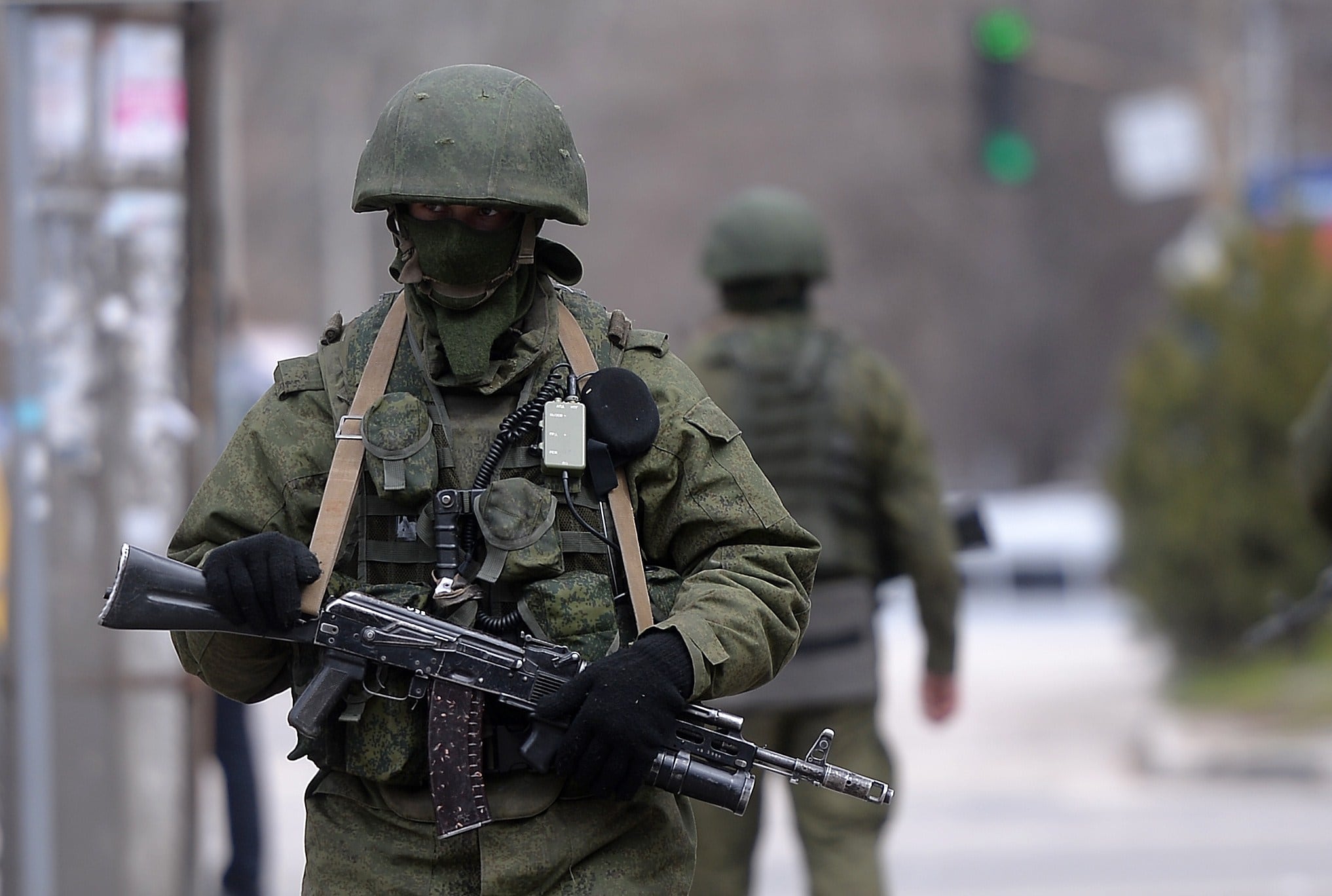
U.S. forces in Europe had declined for decades after the Soviet Union collapsed in the early 1990s — down to about 62,000 personnel by 2016. The smaller size made sense in Europe given there were fewer needs for America’s military muscle. But Russia’s invasion showed how far readiness had fallen, said Tod Wolters, the former head of U.S. European Command.
With the European Deterrence Initiative, the administration wanted to bulk up.
“We knew that we could not go back to Cold War status, with the number of forces that were going to be in the theater. So the question became: How do we make sure that we can rapidly deploy combat power?” said Al Viana, who works in European Command’s force structure and requirements office.
This became the focus of EDI, whose name changed in 2018 when it became clear Russia’s military activities in the region weren’t coming to an end. From 2015 to 2023, the U.S. spent $35 billion on the effort to empower allies and ensure its own forces were more agile. The second goal required funding to run more exercises, rotate more troops, improve infrastructure and store important equipment on the continent.
By the end of fiscal 2014, European Command had dissolved two heavy combat brigades. However, EDI helped rebuild those forces — deferring cuts to Air Force personnel, supporting a combat aviation brigade and making sure the Army had an armored brigade combat team rotating through the theater. In FY16, the Army’s forces in Europe conducted 26 total exercises per year. By 2023, that number was around 50.
In 2022, when Russia launched its full-scale invasion of Ukraine, the U.S. surged 20,000 extra personnel to Europe. That included an armored brigade combat team — including about 4,000 personnel, 90 tanks and more than 200 other vehicles — which arrived within a week from notification. Without those stocks already stored in the theater, it would’ve taken between four and six weeks, according to U.S. Army Europe and Africa.
“EDI is the place to go and see exactly what we’re doing,” Viana said.
The two initiatives’ different fates come almost entirely down to money. EDI was paid for through an account called overseas contingency operations, more commonly referred to as OCO (pronounced like “cocoa”). That fund started for the wars in Afghanistan and Iraq, supplementing the annual Pentagon budget.
“EDI was easy because you weren’t fighting with a service,” a senior defense official told Defense News, speaking on the condition of anonymity because the individual was not permitted to talk to the press. “It was free chicken.”
By the start of this decade, Congress had soured on OCO, partly because the Pentagon used it to dodge some budget cuts it faced in the 2010s. Lawmakers called it a slush fund.
This meant the Pacific Deterrence Initiative didn’t get any extra funding. The European counterpart transitioned away from supplemental money in fiscal 2022, and its funding amounts since then have steadily dropped.
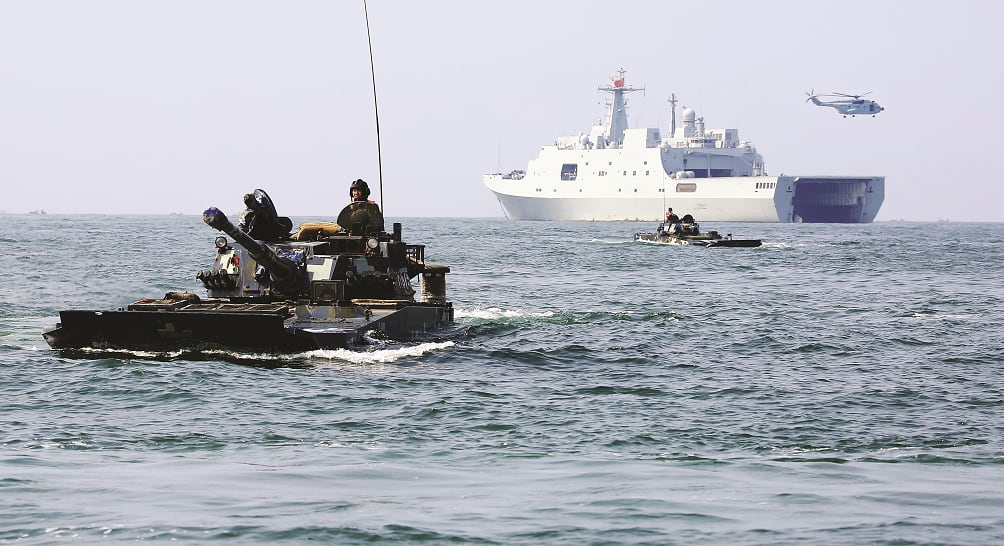
The result is that many items Indo-Pacific Command lists in its annual report to Congress — the things the command says it needs to maintain its strength in the region — aren’t funded. So the command just resubmits those unfunded priorities on top of additional needs in the next year’s report. Hence, each year’s dollar amount snowballs.
When Davidson testified before Congress in 2021, his report listed $4.7 billion in requirements. This year, the number was $26.5 billion — $11 billion of which is unfunded. The bulk of that $11 billion would go to construction costs — much higher in the Pacific than on the U.S. homeland — and munitions.
“Our demand signal has been consistent,” George Ka’iliwai, the director of requirements and resources at the command, said in a March interview. “It is what it is because they are our requirements.”
The Pentagon has questioned some of Indo-Pacific Command’s priorities and whether they’re possible to carry out, even with funding. Infrastructure projects, for example, sometimes require negotiations with the host government as well as expensive labor and material costs. Only about a fifth of Indo-Pacific Command’s desired construction projects appear in the FY25 budget request, Ka’iliwai said.
Since its first report, the command has said the missile defense architecture of Guam — a U.S. territory crucial to the military’s Pacific posture — is its top goal. Others, such as infrastructure on Pacific islands or a secure network to communicate with allies, have also appeared each year.
PDI “doesn’t come close to scratching the itch,” the defense source said.
‘Trade-offs’
There are a few paths forward. One of them would see Congress give Indo-Pacific Command new money each year, like the account McCain sought in 2017.
There are lawmakers, such as Hawaii’s Case, who support that. But the appropriations committees don’t, and it’s unlikely that will change in the short term, according to multiple congressional aides.
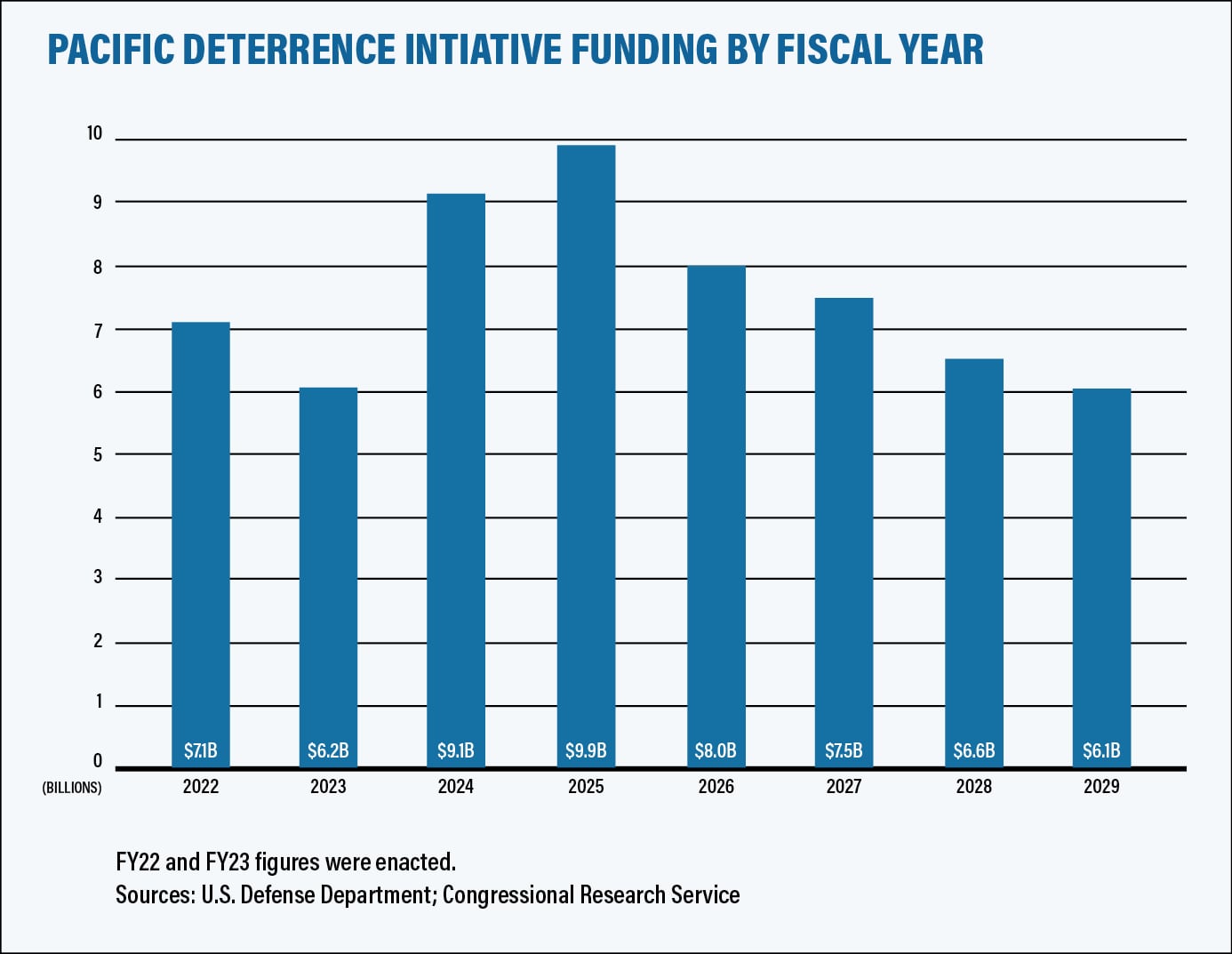
Another option is in the Pentagon’s control. At the start of the budgeting process, department leaders could reserve money for the command’s priorities and build everything else around it. That would resemble how the deputy defense secretary is funding two signature initiatives: the Rapid Defense Experimentation Reserve, which helps accelerate prototyping; and Replicator, an effort to buy drones faster.
But these programs are loose change compared to what the command says it needs — hundreds of millions of dollars compared to more than $11 billion in unfunded priorities.
The way PDI works now is important, according to another senior defense official, who spoke on the condition of anonymity due to the sensitivity of the topic. The official argued that a different model for the initiative would make it more difficult for the Defense Department to plan and budget.
“The department has the best ability to find the right trade-offs,” the official said.
Points of view
Three years after Davidson testified, his successor stepped into a House hearing room this March.
“The risk is still high, and it is trending in the wrong direction,” Adm. John Aquilino noted in his opening statement, later adding that the Pacific is the most dangerous he’s ever seen it.
Sitting next to him, Ely Ratner, the assistant secretary of defense for Indo-Pacific security affairs, was more hopeful, citing higher spending and the administration’s “historic momentum” with allies in the region.
The higher spending is easier to see with PDI, which has charted large increases in funding over the last four years. Whether the initiative is working depends on whether you look at the Pacific through the eyes of Ratner or Aquilino. Both agree war isn’t imminent, but they’re split on whether deterrence is getting better or worse.
If it’s eroding, as Davidson argued in 2021, then PDI’s current model may not be enough. If the region is more stable, then the initiative looks better too.
The biggest misconception about PDI, according to the second defense official, is that the Pentagon doesn’t take it seriously.
“This is not a gradual slope of increase,” the official said of Pacific funding. “This is a significant and dramatic increase in investment, and we are more committed than ever.”
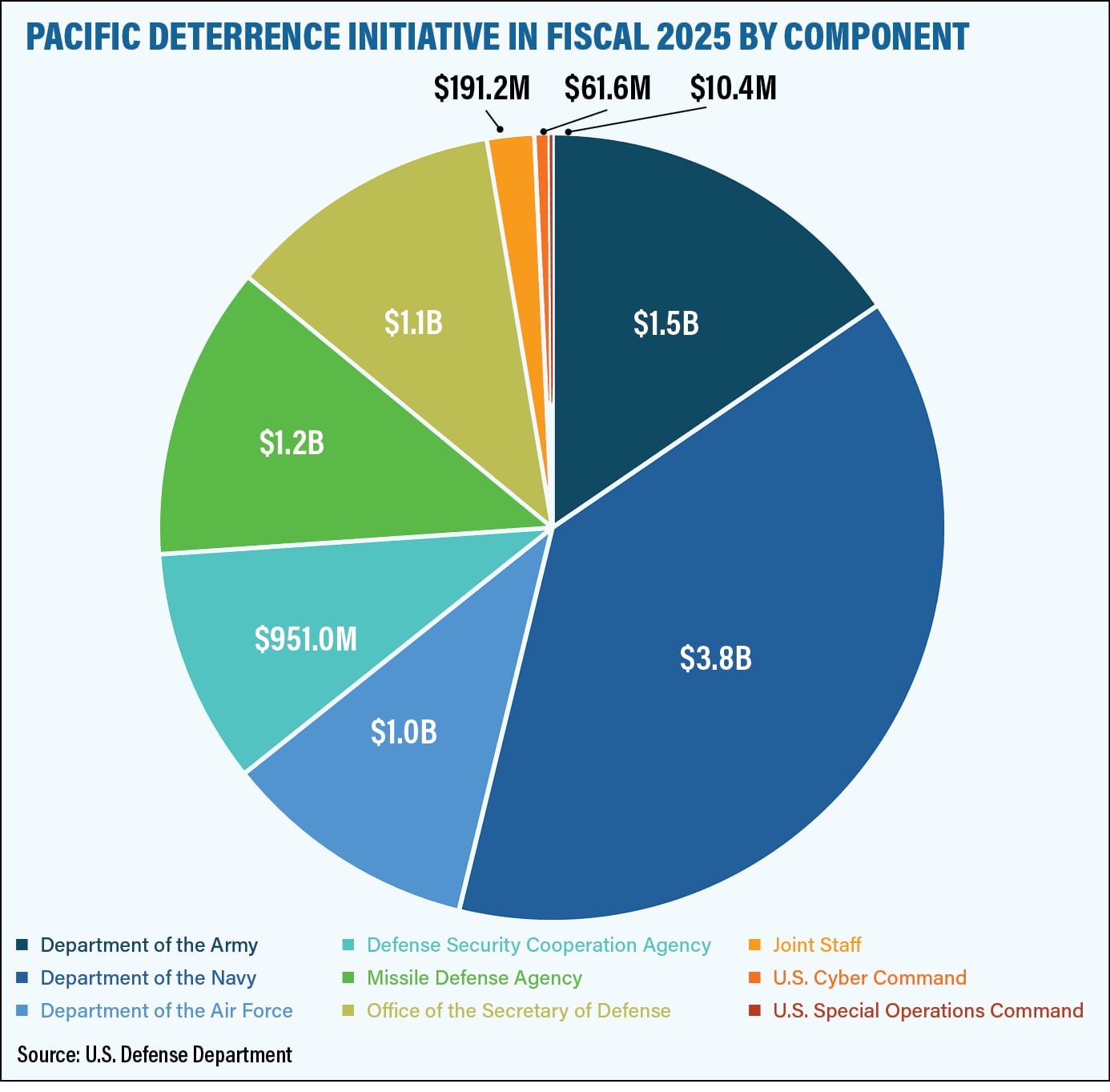
The PDI request for this year is $9.9 billion — more than $800 million over last year’s. But up until soon before the Pentagon released its FY25 budget request, it wasn’t, according to the first defense official and a congressional aide.
To show the Pentagon was focused on the threat from China, defense leaders tagged more items under the initiative at the last minute to raise its dollar figure, the first defense source and a congressional aide told Defense News. Among the late entries was the drone program Replicator.
At the recent March hearing, a member of Congress asked Ratner whether the $9.9 billion includes everything the Pentagon needs “for the PDI to be as effective as possible.”
“Congresswoman,” Ratner responded, “the PDI is simply an accounting mechanism.”
Noah Robertson is the Pentagon reporter at Defense News. He previously covered national security for the Christian Science Monitor. He holds a bachelor’s degree in English and government from the College of William & Mary in his hometown of Williamsburg, Virginia.
